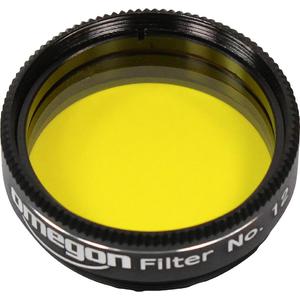Colour filters for planetary observation
Planetary observation is even more fun with colour filters - you can simply see so much more. We explain which filter is suitable for which purpose.

It is fascinating to see what effect colour filters have when observing planets. Anyone who has already increased the contrast when observing Jupiter’s cloud bands, or significantly accentuated Jupiter’s Great Red Spot (GRS), will no longer want to miss out on the advantages of these filters. These details create completely new observing experiences that you may not have thought possible.
But of course there is no universal contrast filter for all planetary observing purposes. Each filter is suitable for specific planets and regions. The filters should be plane-parallel so that they produce a good image with no distortion effects. They are usually available in 1.25" and 2” sized metal mounts.
Here is a list of recommended filters from violet to yellow with their areas of application
Violet W47
- Rings of Saturn and their contours. Clouds in Venus’ atmosphere.
Dark blue W38A
- Good filter for Jupiter, Saturn and Mars. Bands of clouds on Jupiter and Saturn are enhanced. Albedo features, clouds and possibly even the "blue clearing” phenomenon on Mars are revealed.
- Venus' phases are enhanced.
- Comets dust tails are enhanced.
Blue W80A
- Suitable for Jupiter, Saturn and Mars. This will also reveal structures on Venus and make its phases more visible.
Light blue W82A
- Increases contrast for most planets, but particularly suitable for Jupiter and Saturn (especially for cloud bands). With Venus, the visibility of phases is enhanced. Mars polar caps are visible.
Green W56
- Great Red Spot on Jupiter is accentuated. White clouds become visible on Saturn with large apertures, and the rings can be distinguished more easily. Contrasts on the Moon can also be increased. Venus’ phases visible.
Yellow-green W11
- Contrast enhancement on Mars and enhancement of Cassini Division at Saturn. Also suitable for Jupiter.
Dark yellow W15
- Details and clouds on Mars are reinforced. Great Red Spot on Jupiter is accentuated. Increase in contrast on the Moon. Blue fringing produced by achromatic refractors is suppressed.
Dark red W29
- Increase in contrast on the Moon. Light is blocked in the blue segment of the spectrum, and therefore Venus and Mercury can be observed in the daytime sky. Polar caps and albedo features visible on Mars.
Red W25
- As above.
Light red W23A
- As above.
Orange W21
- Well-suited for dust storms on Mars.
- Structures can be identified on Jupiter and Saturn.
- Mercury’s phases can be better observed.
- It may also be possible to detect details on Uranus.
Yellow W12
- Well-suited for clouds and dust storms on Mars and for structures on Jupiter.
- The dark-coloured filters are generally recommended for larger telescopes, whereas the light coloured filters can also be used on small telescopes.
- Details and clouds on Mars are reinforced. Great Red Spot on Jupiter is accentuated. Increase in contrast for the Moon. Blue fringing produced by achromatic refractors is suppressed.
Recommended filters






